Pashupatinath Temple stands as a sacred symbol of Hindu faith in Nepal. Thousands of pilgrims visit this temple every time. It draws people with its spiritual power and ancient charm. This temple sits on the banks of the Bagmati River in Kathmandu. The temple’s unique armature amazes callers from around the world. Addicts believe that worshipping then brings peace and blessings. The history of Pashupatinath dates back numerous centuries. It’s one of the holiest places for followers of Lord Shiva.
Numerous legends compass the Pashupatinath Temple, making it indeed more special. These stories show the temple’s godly significance. According to one legend, Lord Shiva appeared then in his fierce form. The temple represents Shiva’s connection to the universe.

It holds a crucial place in Nepal’s spiritual heritage. Callers feel a deep sense of peace while exploring its sacred grounds. The tabernacle also showcases beautiful puppets and busts. These artworks reflect the rich culture and history of Nepal.
The Pashupatinath Temple remains the oldest Hindu temple in Nepal. It preserves traditions that have lasted for generations. numerous people come to substantiation the temple’s notorious rituals and observances. The temple hosts special events during carnivals like Maha Shivaratri. During these times, the temple attracts thousands of devotees. visitants also come to learn about the major magnets of Pashupatinath Temple. The temple’s spiritual energy and history produce a unique experience. It continues to inspire people from all walks of life.
History of Pashupatinath Temple
The Pashupatinath Temple has a rich history that dates back over a thousand times. It stands as a major spiritual center in Nepal. According to ancient textbooks, the tabernacle was first erected in the 5th century. Over time, monarchs and devotees expanded and repaired it. The temple honors Lord Shiva, known as Pashupati, the protection of creatures. The Bagmati River flowing beside adds to its sacredness. The temple’s architecture reflects the traditional Nepalese style. Callers frequently marvel at its pagoda- style roofs and intricate wood sculptures.
Legends say the temple’s origin relates to a godly event involving Lord Shiva. The history of Pashupatinath mentions that Shiva appeared then in a fiery form. This appearance blessed the land and made it holy for worship. Over centuries, numerous lords supported the temple’s growth.
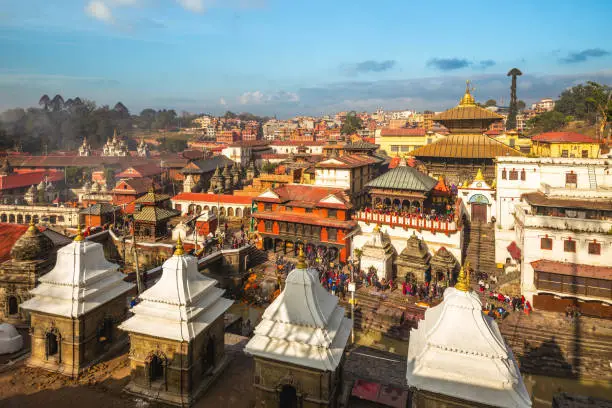
It came a mecca for religious activities and carnivals. The temple also played a part in Nepal’s culture and politics. It survived natural disasters and kept its spiritual significance. moment, it remains the oldest Hindu temple in Nepal and a symbol of faith.
Throughout history, the Pashupatinath Temple attracted pilgrims from near regions and away lands. numerous trippers recorded their visits to this sacred point. The temple’s spiritual energy and history inspired innumerous prayers and rituals. It has been a crucial place during important Hindu festivities like Maha Shivaratri. Its presence helped spread Shaivism in the region. The temple continues to draw people seeking blessings and peace. Its major value earned it a spot among UNESCO World Heritage spots in Nepal. This ensures protection and respect for generations to come.
5 Divine Faces Of Lord Shiva in Pashupatinath Temple
There are mainly 5 divine faces of Lord Shiva in Pashupatinath Temple which is given below.
1. Tatpurusha (East-Facing Face)
The Tatpurusha face looks toward the east and represents the conscious mind and the power of meditation. It symbolizes the internal journey of self-realization and spiritual awareness. In Hindu philosophy, Tatpurusha means “That Person,” reflecting the supreme, unseen being. Devotees facing this side often pray for clarity, wisdom, and peace. This teaches people to look inward and connect with their higher self. This face guides yogis and seekers on their spiritual paths. The Pashupatinath Temple reflects this truth through sacred rituals held at dawn.
The Tatpurusha face connects deeply to religious practice and mental discipline. It inspires people to detach from worldly distractions and find their inner truth. For centuries, yogis have meditated here, believing this face helps control ego and thoughts. It also represents the history of Pashupatinath, where sages would gather for divine insight. This face holds deep meaning in both tantric and Vedic traditions. It supports the journey toward enlightenment and liberation. Many say it awakens the divine spark within all beings.
2. Aghora (South-Facing Face)
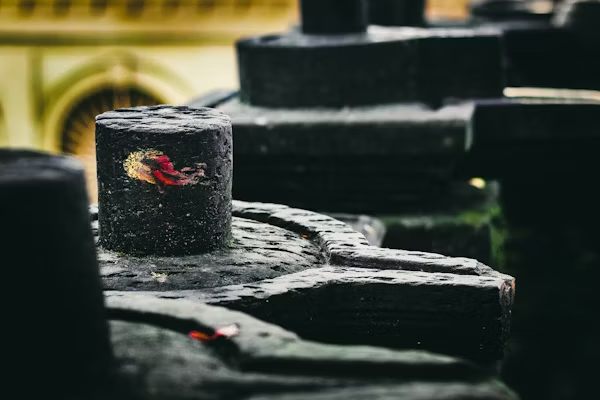
The Aghora face faces south and represents transformation, destruction of evil, and rebirth. “Aghora” means fearless or no fear of darkness , showing Shiva’s power to remove ignorance. This side shows the fierce and protective nature of Lord Shiva. It reminds people that destruction often brings spiritual growth and purity. Followers worship this face for courage, strength, and removal of fear. It is also deeply tied to rituals involving protection and cleansing. The spiritual intensity here draws devotees from all over the world.
The Pashupatinath Temple honors Aghora through powerful mantras and sacred offerings. This face also reflects the temple’s ancient power and deep energy fields. Devotees believe it burns away karma and opens the soul to renewal. It connects with the legends of Pashupatinath Temple, where Shiva appeared to destroy negativity. Religious texts describe Aghora as the fire that burns impurities from within. This makes it crucial in the temple’s spiritual framework. Worshippers often meditate here for emotional healing and inner power.
3. Vamadeva (North-Facing Face)
The Vamadeva face, looking north, represents preservation, healing, and peace. “Vamadeva” means the graceful and peaceful one , a symbol of Shiva’s loving form. This face supports compassion, kindness, and the balance of nature. It reminds worshippers of Shiva’s role as a preserver and nurturer. People pray here for health, long life, and harmony in relationships. This face promotes healing of both the body and soul. Its energy reflects the gentler, more approachable side of the divine.
Pilgrims visiting the Pashupatinath Temple often feel calm near this face. It is also one of the major of Pashupatinath Temple, especially for those seeking relief from illness or stress. The face encourages forgiveness and emotional balance. Ancient healers and saints believed in its soothing and peaceful vibrations. It balances the intense energy of Aghora and brings spiritual softness. People chant peaceful mantras and perform healing pujas here. It adds emotional depth to the temple’s powerful presence.
4. Sadyojata (West-Facing Face)
The Sadyojata face looks west and represents creation, growth, and new beginnings. “Sadyojata” means “born at once” and symbolizes Shiva as the creator. This face connects with the element of earth and the power of manifestation. People pray to this form to begin new journeys and receive blessings. It plays a vital role in birth-related rituals and family ceremonies. The face encourages positive change and creativity in life. Devotees believe it gives strength to start fresh and move forward.

The Pashupatinath Temple links this face with renewal and spiritual fertility. Many pilgrims offer prayers here for children, success, or life transitions. This face reflects the oldest Hindu temple in Nepal, where generations sought divine support for new paths. It signifies that Shiva not only ends things but also creates them. Its spiritual energy inspires people to grow, build, and live fully. It shows the creative side of the divine force.
5. Ishana (Upward-Facing Face)
The Ishana face points upward and represents the purest, most transcendent form of Shiva. “Ishana” means ruler or master, symbolizing the all-seeing, all-knowing aspect. It combines all other faces and stands for supreme consciousness. This face has no direction, showing that the divine is beyond space and time. Devotees look upward in prayer, seeking connection with the eternal truth. This face leads toward moksha, or liberation.
Among all faces, Ishana carries the highest spiritual energy in the Pashupatinath Temple. Its divine light connects to cosmic knowledge and absolute peace. Worshippers chant advanced mantras and meditate for deep spiritual awakening. It is associated with higher dimensions of truth and divine vision. The energy from this face influences every ritual in the temple. This spiritual height helps protect the temple, earning its place in UNESCO World Heritage Sites in Nepal. It unites all forms of Shiva into one divine force.
Permits for Pashupatinath Temple
| Visitor Type | Access to Inner Sanctum | Permit / Ticket Required | Notes |
|---|---|---|---|
| Nepali Citizens | Yes (if Hindu) | No | Free access for locals. |
| Indian Citizens (Hindu) | Yes | No | Must prove Hindu identity if asked. |
| SAARC Nationals | No | No | Can visit outer premises freely. |
| Non-Hindu Foreigners | No | Yes – NPR 1,000 (≈ USD 8) | Ticket gives access to outer areas only. |
| Children (Under 10) | No | No | Entry usually free for children. |
| Group/Filming Visitors | No | Yes – Special Permit Required | Apply via Department of Archaeology, Nepal. |
| Festival/VIP Access | Yes (Special Cases Only) | Yes – Organizer/Temple Authority Pass | Strictly controlled, usually coordinated in advance. |
Major Attractions of Pashupatinath Temple
Pashupatinath Temple is spread in 246 hectares and undoubtly have a lot of hidden gems and source of attractions. They are given below.
1. Main Temple and Golden Roof
The main shrine of the Pashupatinath Temple is its most sacred part. It features a two-tiered golden roof and silver doors. The inner shrine holds the revered Shiva Linga. Only Hindus may enter the inner sanctum for worship. Non-Hindus can view it from outside the eastern gate. The temple’s structure reflects classic Nepalese pagoda style. This is the core of the major attractions of Pashupatinath Temple.

2. Aarti on the Bagmati River
Every evening, priests perform the Bagmati Aarti with fire, chants, and music. This ceremony creates a divine and vibrant atmosphere. Pilgrims and tourists gather to witness the energy of the river and the ritual. The spiritual glow reflects the deep soul of the temple. It reflects the connection between water and Lord Shiva. The Aarti also represents devotion and universal peace. Many devotees consider it the heart of their temple experience.
3. Cremation Ghats (Arya Ghat)
The Arya Ghat, beside the Bagmati River, holds great spiritual and religious importance. It is the only place where royal family members were cremated. Other Ghats serve ordinary devotees for final rites. People believe cremation here ensures liberation or moksha. The sacred river carries away the soul’s last remains. This powerful ritual draws many spiritual seekers and mourners. It connects life, death, and eternal peace at Pashupatinath Temple.
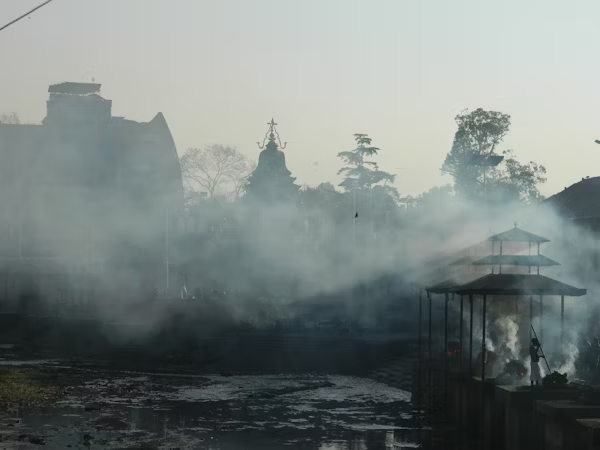
4. Hundreds of Small Shrines and Temples
The temple complex contains over 500 smaller sanctum, monuments and temples. These honor various forms of Shiva and other deities. Each shrine tells a story of Nepal’s rich Hindu tradition. Ancient saints and yogis meditated in the stone courtyards. Many travelers find peace while walking through these sacred spaces. The variety of shrines makes it a living spiritual museum. This attraction reflects the oldest Hindu temple in Nepal and its enduring culture.
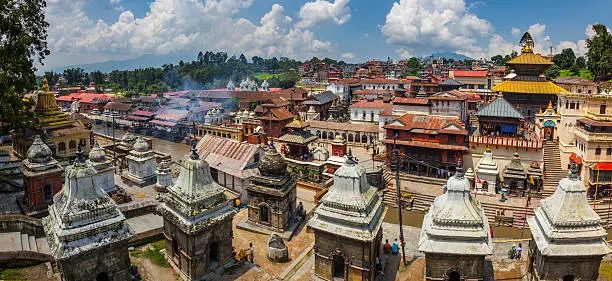
Real Story Behind Pashupatinath Temple
The Pashupatinath Temple holds a fascinating real story that blends history and legend. People believe it is the earthly home of Lord Shiva in his form as Pashupati. According to ancient Hindu beliefs, Shiva appeared here centuries ago to protect all living beings. The temple’s location on the Bagmati River adds to its sacred nature. Archaeological studies show the site has been a place of worship for over 1,500 years. This long history makes it one of the oldest Hindu temples in Nepal. The temple’s structure grew over time, with many additions by kings and devotees. Today, it stands as a powerful symbol of faith and tradition.
Historians link the real story of Pashupatinath to legends of divine intervention and spiritual presence. Shiva’s five faces, each representing different aspects of life, watch over the temple. Ancient texts describe how Shiva’s form appeared here after cosmic events to bless the land. The temple was once hidden in dense forest and discovered by local shepherds. Gradually, the site has became one of the main pilgrimage destination. Kings like Licchavi rulers protected and expanded the temple’s grounds. Its sacredness grew stronger with each generation. This deep connection explains why it remains so revered today.
One of the Oldest Temple of Nepal
The temple’s age and continuous worship explain why it ranks as one of Nepal’s oldest temples. The original site likely dates back to pre-5th century times, making it ancient beyond written records. Continuous renovation preserved the temple’s spiritual and cultural significance. Its inclusion in the UNESCO World Heritage Sites in Nepal confirms its importance. Devotees believe the temple holds divine energy not found elsewhere. The Pashupatinath Temple continues to inspire faith with its powerful presence. This blend of real history and myth creates its unique charm. It stands as a timeless guardian of Nepal’s Hindu heritage.
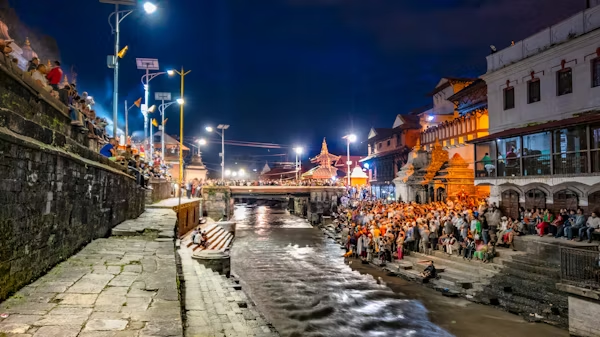
Pashupatinath Puja, Darshan & Aarti Timings
Pashupatinath Temple Puja, Darshan and aarti timings is given in table below. So that, you don’t miss out any special spiritual moment.
| Activity | Time | Details |
|---|---|---|
| Temple Opens | 4:00 AM | Main gates open for devotees and early morning rituals. |
| Morning Rituals / Puja | 4:00 AM – 5:00 AM | Includes cleaning, Nitya Puja, and Abhishek to Shiva Linga. |
| Darshan Begins | 5:00 AM | Public allowed for Pashupatinath Temple darshan from this time onward. |
| Mid-day Puja | 10:00 AM – 1:00 PM | Devotees offer prayers, flowers, and perform personal rituals. |
| Temple Closes (Midday Break) | 1:00 PM – 2:00 PM | Priests take a short rest; inner sanctum remains closed. |
| Temple Reopens | 2:00 PM | Darshan resumes for afternoon visitors and pilgrims. |
| Evening Aarti at Bagmati River | 6:00 PM – 7:30 PM | The famous Ganga Aarti with fire, chants, and music. |
| Ratri Puja (Night Worship) | 8:30 PM – 9:00 PM | Final offering to Lord Shiva before closing. |
| Temple Closes | 9:00 PM | Gates close after Ratri Aarti and rituals. |
Conclusion
The Pashupatinath Temple stands as a dateless symbol of faith, devotion, and spiritual energy. It continues to draw pilgrims and trippers from across the world. Each corner of the tabernacle holds stories, legends, and godly presence. From ancient rituals to important aartis, every moment then touches the soul. Its place as the oldest Hindu tabernacle in Nepal adds to its unmatched heritage. Callers leave with peace, blessings, and a deeper connection to the godly.
Whether you seek history, peace, or a spiritual trip, Pashupatinath Temple offers it all. The sacred point remains a gem among UNESCO World Heritage spots in Nepal. With detailed rituals, rich legends, and mystical energy, it captures every heart. The tabernacle welcomes you with dateless grace and spiritual strength. Its major lodestones and vibrant traditions make it indelible. Let this godly place guide your soul toward light and emancipation.

